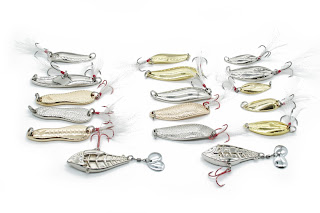- Hit-and-Sit
- The Shake
- Rip-and-Slip
Hit-and-Sit, Summer anglers commonly contact the bottom. Some jigging techniques actually work best with a constant connection to the substrate. Vet for some reason ice anglers commonly suspend their baits in the clear blue of the water column, for several seconds. Wary walleye will approach and stare at the motionless bait. Once the angler finally lifts the spoon, the observing fish reacts, striking instinctively without hesitation.
The Shake. Shaking a spoon involves super-concentrated movements of the rod-tip-often in an area of less than an inch. The goal is to keep the body of the spoon essentially still while making the hook flip and flit. Using a small worm or white soft plastic trailer like the Lindy Tiny Tails or Powerbait Micros impersonates the white flashes of a fledgling minnow’s belly.
Rip-and-Slip. Long, fast upward motions rip the spoon through the water, creating flash, vibration, and bubbles that attract walleye from great distances, However, inactive fish often follow their final approach with abrupt departure. That’s when it’s time to slip a different, smaller bait in front of the fish. The spoon acts as the attractor while the smaller bait finalizes a response from wary walleye.
If using a smaller minnow, such as a fathead or crappie minnow, then a like-size number 6 hook is more applicable. Conversely, very large minnows such as huge golden shiners or sucker minnows require a larger hook, and a size 2 may work much better. The right size and type of minnow can often mean the difference between catching fish or not. If ever in doubt of what to choose, start small and work your way up. Smaller minnows are suitable forage for the greatest size range of walleye.
To be continued.


No comments:
Post a Comment